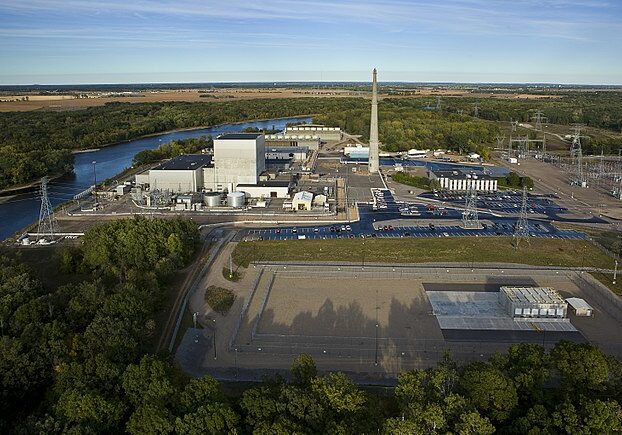Public comment: Extending Monticello reactor operating license by 60 to 80 years

The US Nuclear Regulatory Commission (NRC) has extended the public comment period from June 10, 2024 to June 25, 2024 regarding Xcel Energy ‘s Monticello nuclear power station application to renew its commercial operating license for a second 20- year period. To do so, the Xcel Energy application is seeking NRC approval of a Site-Specific Environmental Impact Statement for second license renewal period. Monticello’s current operating license is already well into its initial 20-year operating license extension which expires September 8, 2030. The Minnesota nuclear power plant will then be 60 years old. This second extension seeks to increase its operating license from 60- to 80-years. Monticello’s design is a 1960’s vintage General Electric Mark I Boiling Water Reactor (BWR), almost identical to the three Japanese reactors that melted down in hydrogen explosions after the March 11, 2011 severe earthquake and 48-foot tsunami knocked out all electrical power to keep the reactor cores cool once the reactors were shutdown in a SCRAM.
You can email your comments to the NRC electronically using the email address [email protected].
Here are a few noteworthy facts about Monticello that the NRC could be reminded of.
The GE Mark I BWR has repeatedly been warned to be a controversial and inadequate design. Its reactor containment structure is undersized for the reactor’s power rating and consequentially a vulnerable under accident conditions. The first warning came in 1972 from Dr. Stephen H. Hanauer, a prestigious senior reactor safety officer in the Atomic Energy Commission. Dr. Hanauer recommended that the GE Mark I containment system be discontinued and no further construction permits be granted that relied upon it. His request was denied by his superiors who justified no action because “it would mean the end of nuclear power.” The second warning came from the testimony of three of its GE engineers who publicly resigned their positions before Congress in 1975 detailing that the GE BWR was “not a quality product.” In June 1986, the NRC top safety director Harold Denton publicly warned a nuclear industry conference that given the GE reactor’s power rating there was a 90% chance of containment failure should there be a severe accident at full power releasing radiation into the surrounding environment. All of these warnings were validated by the 100% failure rate of the Mark I containment system for all three of the Fukushima-Daiichi units that were at full power when Japan’s 2011 earthquake knocked out offsite power from the electric grid to the reactor site and the tsunami flooded all of the onsite emergency backup power systems needed to maintain reactor cooling. The three reactors overheated, the Mark I containment systems over-pressurized, ruptured, followed by three hydrogen explosions and radioactive fallout contaminated a large sector of Japan that remains unsafe to inhabit today and into the indefinite future.
To make matters worse, in the aftermath of Japan’s nuclear catastrophe, the NRC buckled to congressional pressure generated by the nuclear industry lobby and disregarded the lessons learned from the Fukushima catastrophe for US reactors. The NRC staff recommended safety upgrades to Monticello and 19 other GE Mark I reactors for “hardened containment vent systems’’ that would also require in-line high efficiency radiation filters as the over-pressurization was vented. The radiation filters were denied on “cost benefit”. Other safety-related upgrades that were recommend by NRC staff to be made “mandatory” for continued operations were instead made “voluntary” by the seated commissioners.
Pending Monticello’s license extension approval, aging safety systems, structures and components are also failing. Miles and miles of costly, difficult to inspect buried piping carrying radioactive isotopic water (tritium) are experiencing recurring radioactive leaks into groundwater from broken buried pipes under Minnesota’s Monticello nuclear power station. Radioactive leaks at Monticello were discovered in November 2022 but the public was not notified until March 2023. The operator, Xcel Energy, first assured the public that 100% of the radioactive water from the leak was recovered. That was not true. Both the operator and the NRC ten assured in their public briefings that the radioactive water was not flowing into the Mississippi River which is a source of drinking water towns and cities downstream. That has also turned out not to be true prompting an apology from the NRC for what its worth.
In fact, there is a long history of both industry and regulator dishonesty where contaminated radioactive leaks, spills and deliberate discharges released into the public right of way that has been documented by the Beyond Nuclear report, “Leak First, Fix Later: Uncontrolled and Unmonitored Radioactive Releases from Nuclear Power Plants,” updated in March 2015. One nuclear utility stands out in particular. The Chicago-based, Exelon Nuclear, was discovered to be hiding recurring radioactive water spills into the countryside surrounding (corn fields, shallow domestic wells, live stock watering pond, roadside drainage ditches, etc.) around the Braidwood nuclear power station. Braidwood also routinely discharges large batch releases of tritiated water into the Kankakee River just two miles upstream of the intake pipe for the City of Wilmington, IL municipal water treatment facility. With the eventual disclosure of more than a decade of leaks and spills were secreted from the public view around the Braidwood and other commercial reactor sites, the NRC and the industry resolved the problem by providing the industry with a “voluntary” reporting system that is in effect to today. It should be noted that this voluntary system has resulted in the “no foul” reporting policy resulted in no enforcement for Monticello radioactive leaks in March 2023 for its radioactive leaks into the Mississippi River that occurred in November 2022.
Support Beyond Nuclear
Help to ensure a safer, greener and more just world for all

